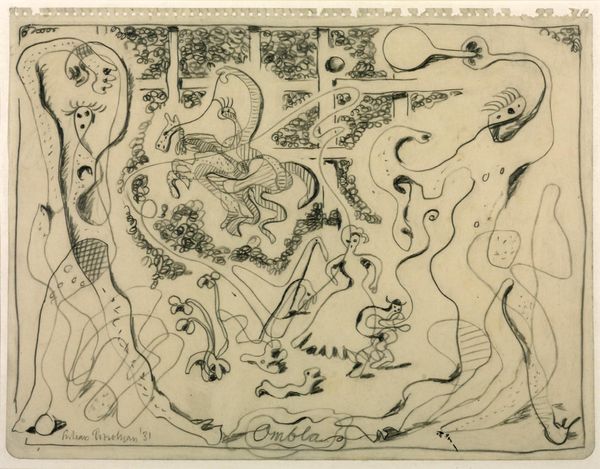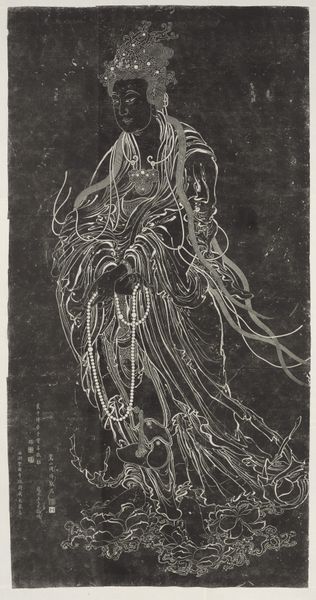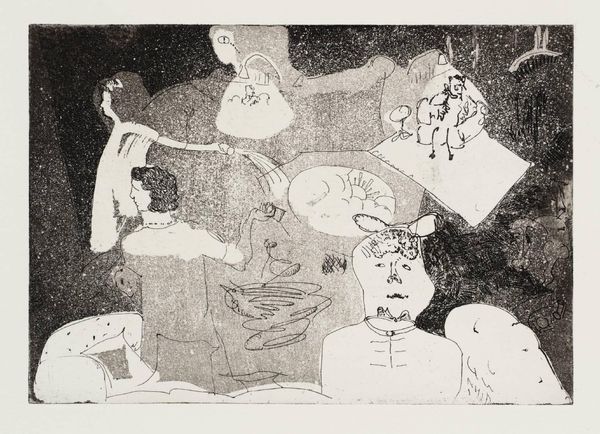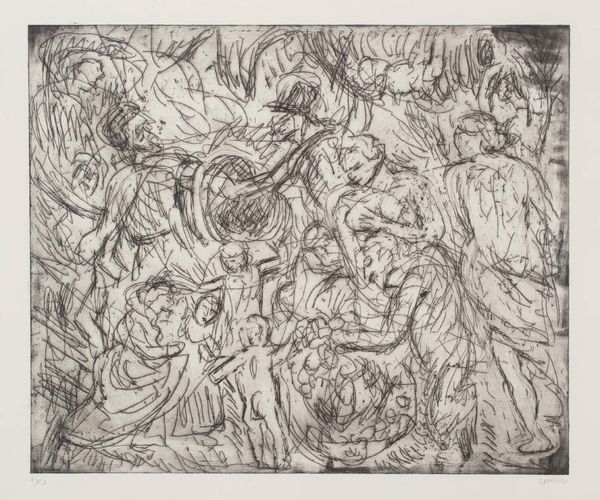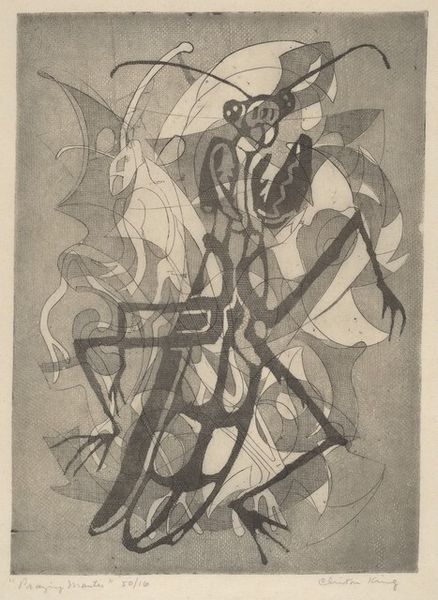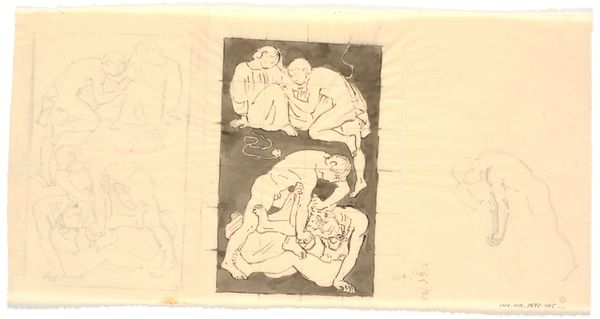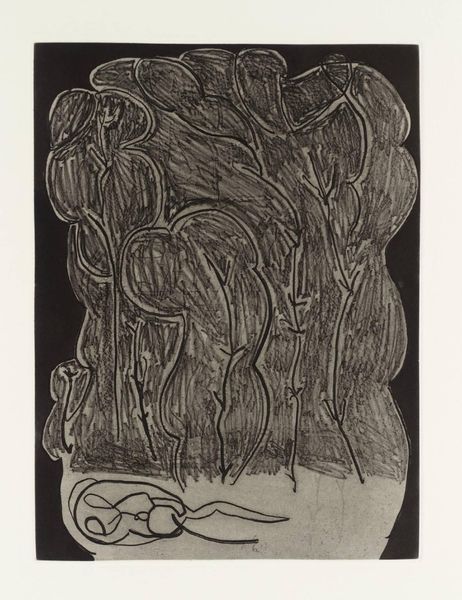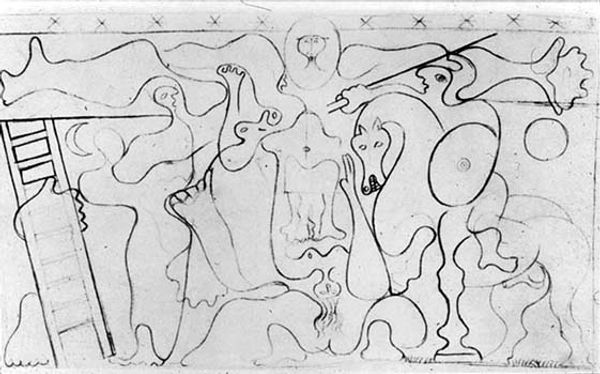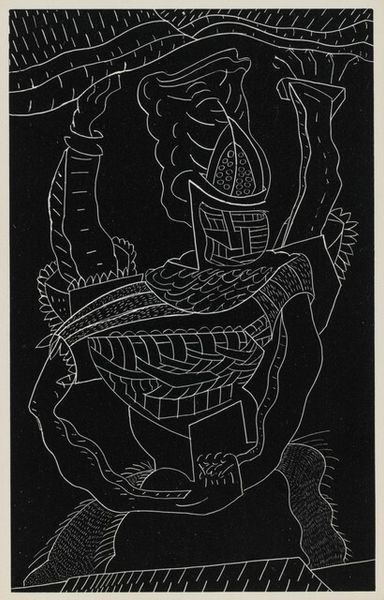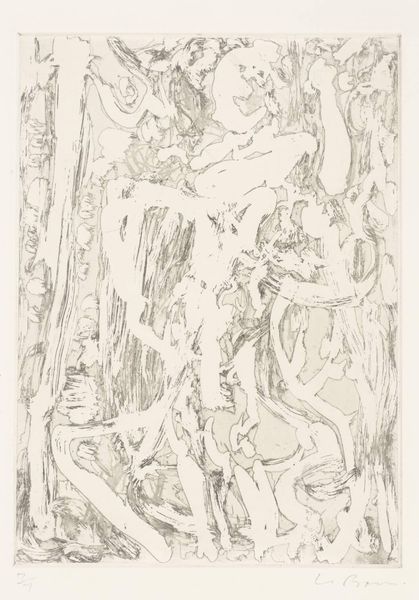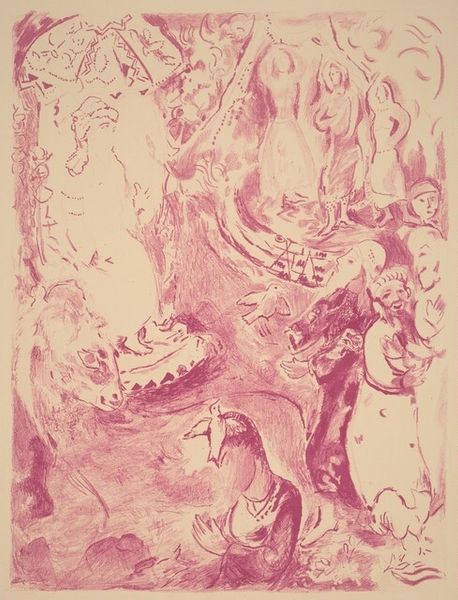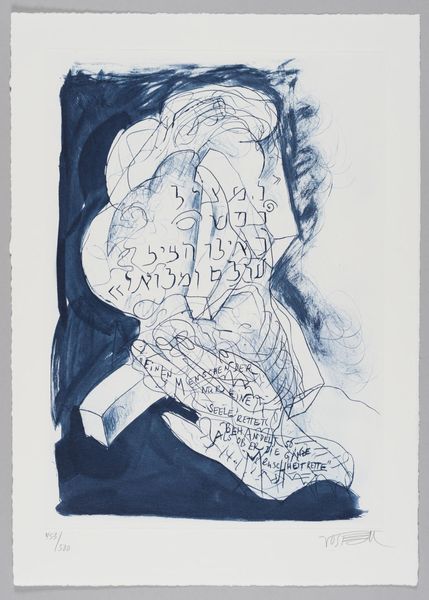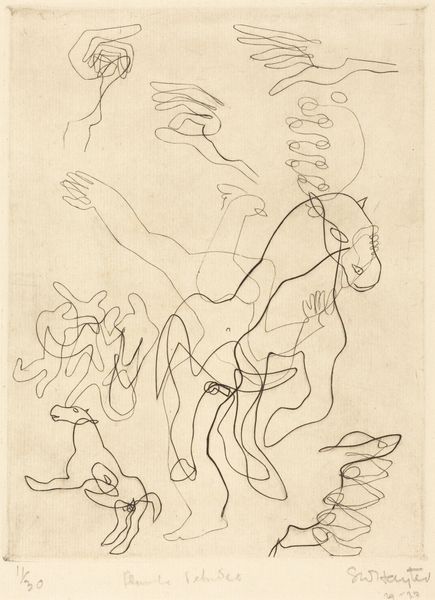
drawing, print, ink, engraving
#
drawing
# print
#
figuration
#
ink
#
linocut print
#
ink drawing experimentation
#
line
#
history-painting
#
grotesque
#
engraving
#
angel
Dimensions: height 222 mm, width 272 mm
Copyright: Rijks Museum: Open Domain
Curator: Look at this dramatic image, "Gevecht tussen engelen en monsters," or "Battle between Angels and Monsters," made in 1829, possibly by jonkheer Isaac Lambertus Cremer van den Berch van Heemstede. It's rendered as a print, seemingly from a linocut or engraving. What is your initial response to it? Editor: Well, my first impression is one of chaos and unrest. The figures are entangled in a very visceral struggle between these ethereal and demonic figures. The stark white lines against the black background definitely amplify the drama. Curator: Indeed. Prints like this were important for disseminating imagery in the 19th century. Notice the rather ambiguous forms: angels rendered without overt Christian symbolism, monsters bordering on the grotesque. It suggests the artist might have been grappling with emerging Romantic sensibilities and perhaps societal anxieties surrounding faith and morality. Editor: Absolutely. You can't help but read it through the lens of societal conflicts. It looks like a clash of civilizations. The historical context would place it amid rising industrialism, changing social structures and widespread spiritual questioning. Did these socio-political events inform his aesthetic decisions in any obvious ways? Curator: That's a very salient point! While Cremer van den Berch van Heemstede moved within specific social circles and displayed an individual, almost eccentric aesthetic, it is plausible to argue the formal and narrative characteristics reflect broader struggles between established and modernising ideologies present during the earlier period of the Restoration. The work invites analysis regarding the impact on aesthetic sensibility that the political changes brought after the Napoleonic Era. Editor: Right, and it feels so relevant still. Replace ‘angels and monsters’ with any contemporary binary opposition – oppressor/oppressed, colonizer/colonized, etc. – and suddenly it speaks directly to current struggles. That rawness and unresolved tension feel incredibly present. How else has the social reception shaped the artwork in time? Curator: Subsequent interpretations certainly build on that. Later in the 20th century, for example, its unsettling composition led many scholars to examine its connection with other movements concerned with depicting dark narratives. Regardless of intention, art will have its destiny shaped not only by those who make it, but equally those who approach and comment it afterwards. Editor: It really does leave you pondering these enduring battles. Whether religious, ideological, or deeply personal, the human story seems to return again and again to conflicts like the one we are witnessing here, doesn’t it? Curator: It's a work that reflects a society in flux and that continues speaking powerfully today through its raw portrayal of a conflict whose themes never vanish.
Comments
No comments
Be the first to comment and join the conversation on the ultimate creative platform.
